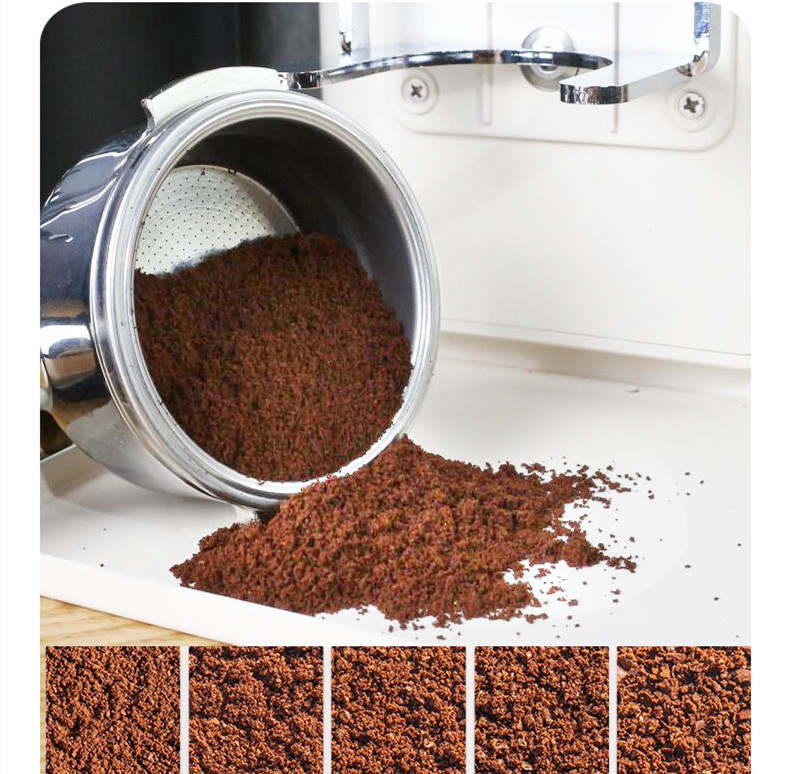Enhancing Coffee Quality Consistency Through Precision Grinding Techniques
Understanding the Role of Grind Size in Extraction Uniformity
Grind size directly impacts the rate and consistency of coffee extraction, making it a critical factor in achieving stable quality. When grounds are too coarse, water flows through them too quickly, leading to under-extraction—a weak, sour brew lacking complexity. Conversely, overly fine grounds slow down water flow, causing over-extraction, which results in bitterness and astringency. The key to consistency lies in maintaining a uniform grind size tailored to the brewing method. For instance, espresso requires a fine, even grind to ensure water passes through the puck at the right pressure and speed, while French press demands a coarser grind to prevent sediment in the cup. By calibrating the grinder to produce precise, homogeneous particles, baristas can minimize extraction variability and deliver balanced flavors in every serving.
Adjusting Grind Settings for Environmental Factors
External conditions like humidity and temperature can alter coffee bean density and moisture content, affecting grind consistency. In humid environments, beans absorb moisture, becoming softer and more prone to clumping when ground fine. This can lead to uneven extraction, as water channels through the puck instead of flowing uniformly. To counteract this, baristas may need to adjust the grind slightly coarser to maintain flow consistency. Similarly, cold temperatures can make beans brittle, increasing the risk of producing irregular, overly fine particles. By monitoring environmental conditions and fine-tuning grind settings accordingly, cafes can ensure that each batch of coffee extracts predictably, regardless of seasonal or climatic changes.
Implementing Regular Grinder Maintenance for Particle Uniformity
Dull or dirty burrs in a grinder can produce inconsistent particle sizes, even with the same settings. Over time, burrs wear down, creating a mix of fine and coarse grounds that disrupt extraction balance. Regular cleaning and maintenance are essential to prevent this. Burrs should be brushed or vacuumed daily to remove residual oils and particles that can clog the grinding mechanism. Additionally, periodic calibration or burr replacement ensures that the grinder continues to produce uniform grounds. By prioritizing maintenance, cafes can avoid unexpected fluctuations in grind quality, which would otherwise compromise the stability of their coffee output.
Leveraging Dose Control to Complement Grind Precision
Even with perfect grind size, inconsistent dosing—the amount of coffee ground per serving—can lead to quality variability. Under-dosing results in a thin, under-extracted brew, while over-dosing creates a dense puck that restricts water flow, causing over-extraction. To achieve stability, baristas must pair precise grind settings with accurate dosing. This involves using a grinder with a reliable weighing system or calibrating the machine to dispense consistent doses manually. For example, a standard espresso shot typically requires 18–20 grams of coffee ground to a fine, even texture. By ensuring both grind size and dose remain consistent, cafes can eliminate one of the most common sources of flavor inconsistency.
Synchronizing Grind and Dose for Different Brewing Methods
Different brewing methods demand unique grind-to-dose ratios to achieve optimal extraction. For pour-over coffee, a medium-coarse grind paired with a specific dose (e.g., 22 grams for a 360ml brew) ensures even saturation and controlled extraction. In contrast, espresso relies on a finer grind and a higher dose-to-water ratio (e.g., 1:2) for a concentrated, balanced shot. By tailoring both grind size and dose to each method, baristas can create predictable, high-quality results across all menu offerings. This approach also simplifies training, as staff can follow standardized recipes that account for both variables.
Using Scales to Verify Dose Accuracy
While some grinders offer built-in dosing features, manual verification with a digital scale adds an extra layer of precision. Weighing each dose before brewing allows baristas to catch minor discrepancies that could affect extraction. For instance, a grinder might dispense 19.5 grams instead of the intended 20 grams, leading to a slightly under-extracted shot. By adjusting the grind or dose slightly to compensate, baristas can maintain consistency even when equipment isn’t perfectly calibrated. This attention to detail ensures that every cup meets the same quality standards, regardless of external factors.
Standardizing Workflows to Minimize Human Error
Human variability is a significant challenge in maintaining coffee quality consistency. Even skilled baristas may grind coffee differently due to distractions, fatigue, or subjective judgment. Standardizing workflows reduces this risk by creating clear, repeatable steps for grinding, dosing, and brewing. For example, a cafe might implement a protocol requiring baristas to grind coffee directly into a portafilter, weigh it immediately, and adjust the grind if the dose is off by more than 0.5 grams. By turning these actions into habits, teams can minimize inconsistencies caused by manual processes.
Training Staff on Grind-Quality Relationships
Education plays a crucial role in ensuring that all team members understand how grind size affects extraction and flavor. Regular training sessions can cover topics like grind adjustment techniques, the impact of environmental factors, and the importance of dose control. For instance, baristas might practice calibrating a grinder for espresso and then taste-testing shots to see how small changes in grind size alter the result. This hands-on experience helps them develop an intuitive sense of how to troubleshoot issues and maintain quality, even during busy periods.
Documenting Grind Settings for Reproducibility
Recording optimal grind settings for different coffees and brewing methods creates a reference point that ensures consistency over time. For example, a cafe might note that a particular Ethiopian bean works best with a medium-fine grind for pour-over and a fine grind for espresso. These records can be shared among staff and updated as beans change or equipment wears down. By having a written guide, new hires can quickly learn the cafe’s standards, and experienced baristas can verify that they’re following best practices. This documentation also helps track quality trends, allowing teams to identify and address issues before they affect customers.
By focusing on grind size precision, dose control, and standardized workflows, cafes can significantly enhance the stability of their coffee quality. These strategies address both mechanical and human factors, ensuring that every cup delivers the balanced, delicious flavors customers expect.


